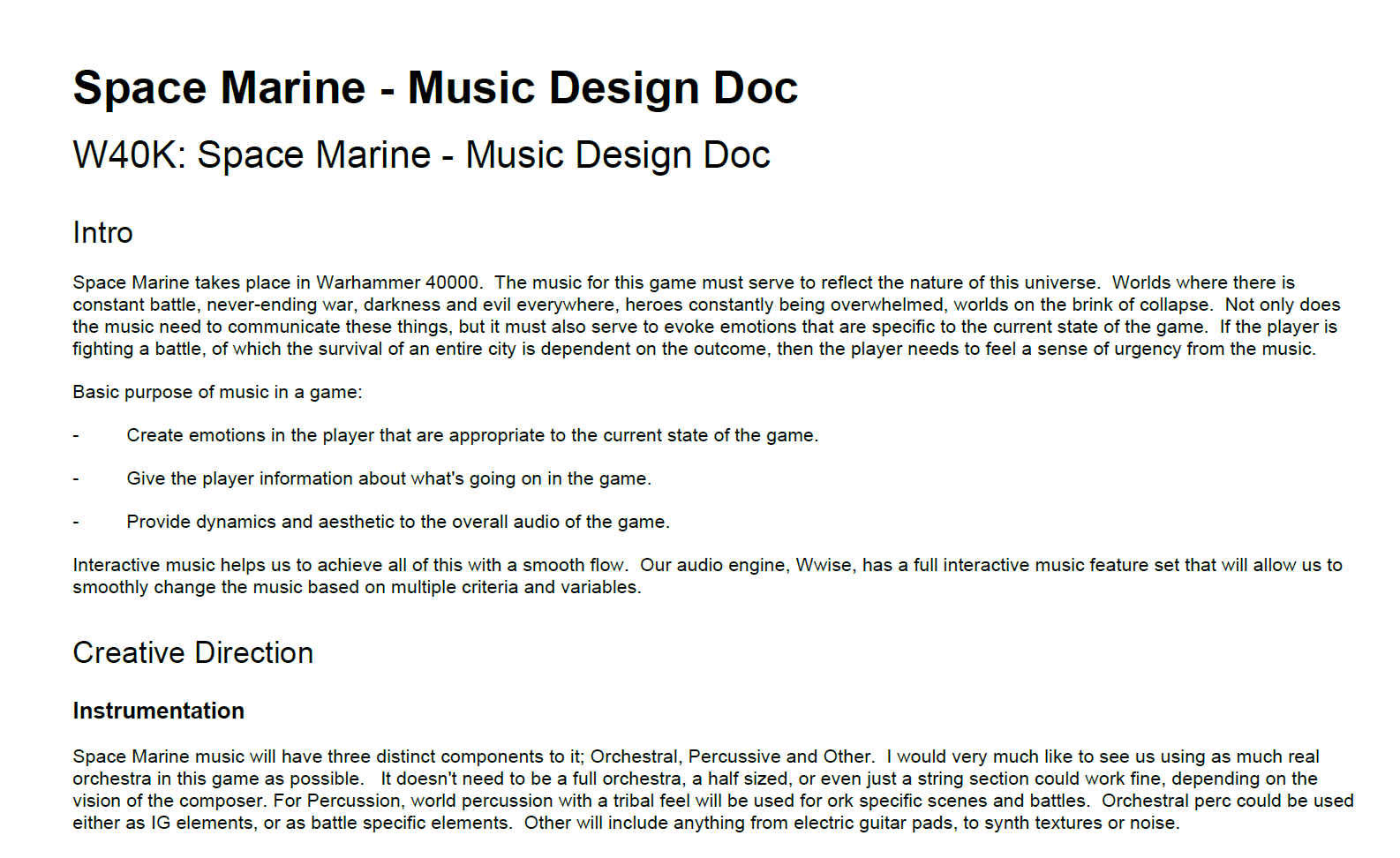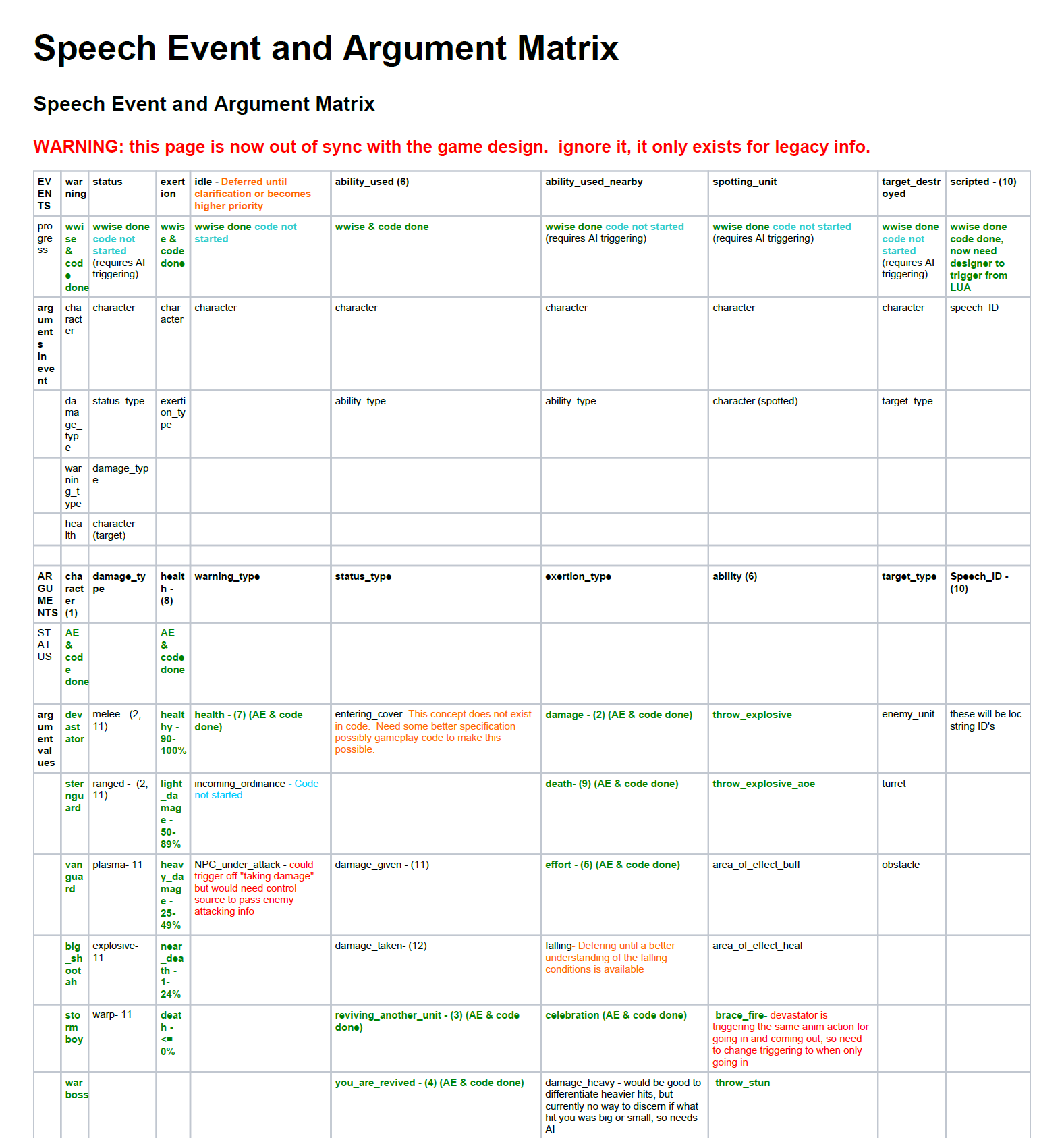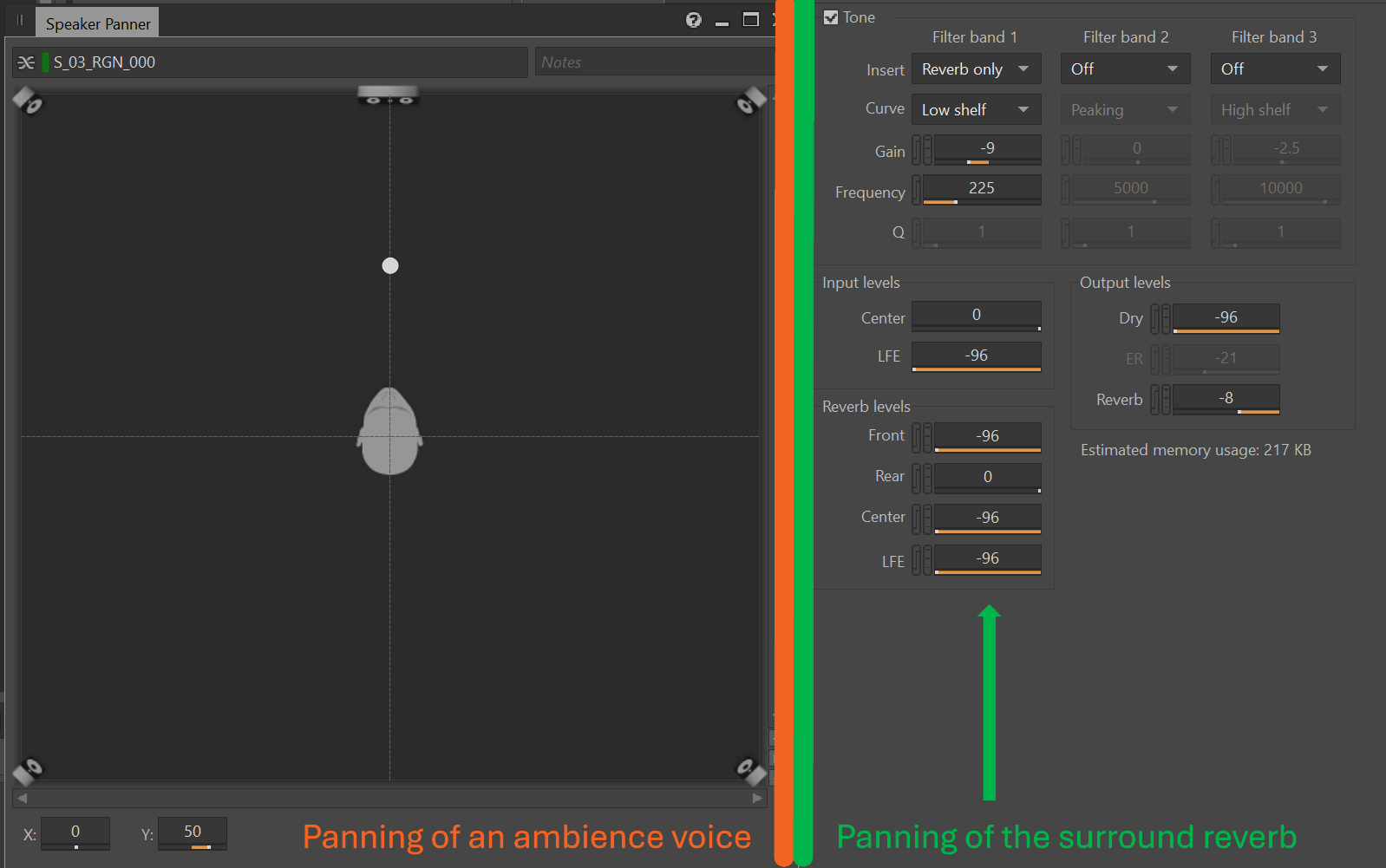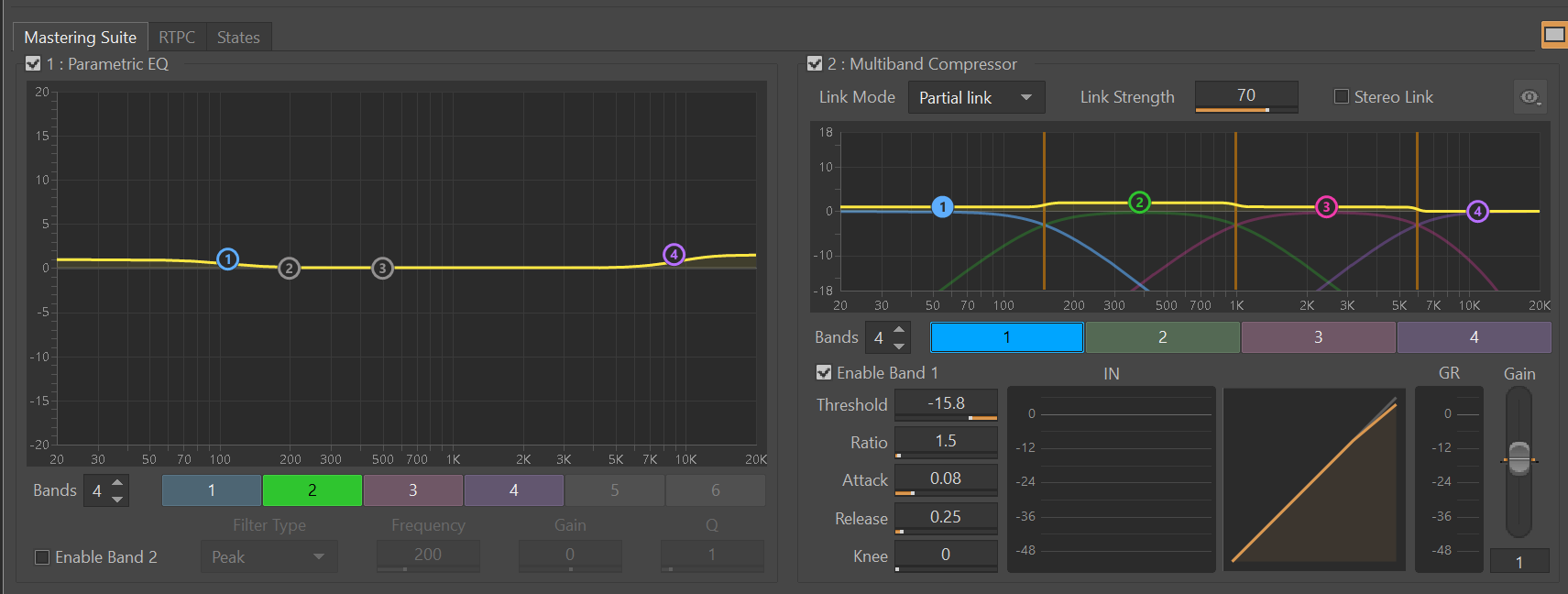Introduction
Sneakybox is a Lithuanian video game development studio specialising in full game development, as well as porting and remastering services. Founded in 2012, the studio has worked on titles like Lords of the Fallen (Hexworks/CI Games, 2023), Star Trek: Resurgence (Dramatic Labs/Bruner House, 2023) and many more. In 2023, the studio was approached and commissioned by SEGA to modernise and remaster the legendary Warhammer 40,000: Space Marine (Relic Entertainment/SEGA, 2011).
As for myself, I was the sole Technical Sound Designer hired to overlook the whole audio pipeline for this remastering process. Most of my work was debugging, implementation and mixing in Wwise.
Creative and Technical Goals
Broadly speaking, we’ve had a twofold vision for Warhammer 40,000: Space Marine – Master Crafted Edition, which referred to the creative and the technical goals of the development.
On the creative front, we were striving to maintain and enhance as much of the original content as possible. In terms of audio, this meant to preserve almost all of the iconic original music and sound effects that the fans have grown to love so much over the years.
When it came to the technical goals, our team has set out to modernise these 14-year-old systems inside the game engine and, in result, to make the game suitable for modern gaming platforms. Same was done with audio systems as well (i.e., upgraded in-game reverb quality, enhanced SFX randomisation, etc.). Moreover, these technical aspects of the production served as effective means of delivering on the creative goals as well–renewed systems helped to enhance the original audio material.
Debugging: Wwise Migration and Pre-Existent Errors
The original Space Marine was released 14 years ago. Because of that, our team would say that we were performing some kind of video game archaeology by modernising this title. We were constantly going through the 14-year-old audio documents for the original game (Figures 1 and 2), trying to understand the original creative direction, how those audio systems were intended to work and what to find where.

Figure 1 - Music Composition and Design Document

Figure 2 - Speech Event and Argument Matrix
For example, we had to migrate the Wwise project from the 2011.1 version to the 2021.1.14 one. Anyone who ever had to deal with Wwise migration, especially of such a scale and time period, can imagine how many issues and inconsistencies that brought up. Here are some of the more prominent of such issues:
Unwanted and intrusive low-pass filtering of 2D ambience and cinematic audio due to audio emitters being randomly placed and attenuated in the 3D environment
- Solved by disabling positioning in 3D space for 2D assets.
Broken transitions in the Interactive Music Hierarchy
- Solved by circumventing volume threshold for musical assets.
Broken transitions in some ambience Random Containers
- Solved by carefully circumventing some of the volume thresholds for these particular containers and editing fade characteristics of these particular containers.
Non-functioning game-defined reverb aux sends system
- Solved by re-rigging game-defined reverb send system in Master-Mixer Hierarchy.
Some non-critical errors were present in the old project version as well. A number of such errors occurred during the building of sound banks–unused orphan events were assigned to various banks which led to errors during building. Additionally, game engine used to trigger some events that were clearly not used or missing in Wwise, thus some errors would occur during the profiling of the game. Some clean-up was done to decrease the number of such warnings mainly just as a house-keeping measure.
New Sounds and Old Sounds Anew: Bolter SFX and Ork VO Shouts
Although we aimed at maintaining as much of the original audio material as possible, some assets had to be changed or enhanced. Some of the more notable changes that we decided to make are updated Bolter sounds (the gun itself and the bullet impacts), in order to be more consistent with other modern Warhammer 40,000 titles, some updated UI SFX and renewed Ork Boy shouts.
With regards to the latter, two tasks were at hand: redesigning and reimplementing the old Ork Boy VO assets and designing and implementing new additionally-recorded lines.
For the newly recorded shouts, we’ve decided to keep the iconic Cockney accent of theirs and, once our writers came up with additional lines, we collaborated with the good people at PitStop Productions for recording and editing the assets. Once that was done, I popped them into my Reaper project and added some Ork-like roughness: mostly down-pitching and some subtle saturation in order not to lose the high-end and to add some aggressiveness.
Overall, we introduced almost 200 new Ork Boy shouts in the Master Crafted Edition of the game which resolves the problem of these dialogue lines being too repetitive, the issue that the players of the original game were pointing out as well.
Mixing and Mastering
No drastic mixing changes were made in comparison to the original shipped version of the game. Although, some actions had to be done to make the gameplay experience more pleasurable. A few more notable mix changes:
Attenuation. Various attenuation curves were slightly edited. Most of those were speech attenuation. The goal was to find a balance between informing the player of game events (i.e., Squig approaching, Ork Boy dying) and immersing the player–delivering a more realistic sound damping in relation to distance.
Death Screen. Once Titus, the main character, dies, the player is introduced with a Death Screen during which the character reads his “Thought of the Day”. At the same time, all of the gameplay’s soundscape is still fully present. To find a better balance for that, a low-pass filter on all of the gameplay sounds is triggered as the Death Screen occurs (see video example below). This provides a decent frequency space for Titus’ words to be notable.
Game-Defined Reverb Sends. All of the game-defined reverb aux channels were edited in order to ensure more fitting reverb effects in relation of the assigned game environments.
Additionally, I had the task of up-mixing the game in order to support up to 7.1 speaker setup surround sound capability. Firstly, we had to make sure that all objects that are supposed to be placed in the 3D environment were rigged appropriately. Once that was taken care of, I had to up-mix the stereo ambient assets to support a surround system. That was done in Wwise by positioning the original ambience assets 50 percent of the distance in front of the player and sending the same signal to a user-defined aux reverb bus, mixed to be in the rear of the player (Figure 3). This, being a simple yet effective trick, turned out to work quite well, providing sufficient quad ambient beds.

Figure 3 - A Simple ambience up-mixing technique using reverb sends
For the mastering pass, we used the Mastering Suite by Audiokinetic. It has proven to be an efficient, industry-standard tool for adding that extra subtle polish on the game’s mix. Our mastering chain included some slight EQ shelves, multiband compression, mainly to tame some of the low frequencies as well as to add some more punch (Figure 4), and a limiter, holding the loudness levels at the needed standard for each platform (i.e., -22 dB LUFS-I for Windows).

Figure 4 - EQ and multiband compression chain in the Mastering Suite
Conclusion
It was a privilege to have the opportunity to work on revitalising such an iconic game. Our whole team has put a lot of heart and consideration into polishing this project, having in mind the community that the Warhammer 40,000 franchise has garnered over the years.
In terms of audio, the original content was crafted so well that it made our work of elevating it much easier. The musical compositions still stand the test of time, and the sound effects continue to feel as diabolical as ever. Therefore, it was a mere pleasure to add some additional kick to the hellish soundscape that encapsulates the Warhammer 40,000: Space Marine – Master Crafted Edition.



Comments